How to Bleed Drum Brakes? (Tips & Techniques)
Thorough understanding how to bleed drum brakes, is essential for you in maintaining your brake performance and vehicle safety. Starting with an overview of your entire process, we delve into your importance of bleeding brakes, specifically highlighting how to remove air from your lines to ensure your optimal hydraulic pressure. We also list out your necessary tools and equipment, ensuring you’re well-prepared for any related task you might have ahead. Addressing such common challenges, we provide you practical solutions to issues such as your air bubbles and stripped bleeder screws.
How to Bleed Drum Brakes?
Bleeding your drum brakes is an essential maintenance task to ensure that you have an effective braking. Here’s your step-by-step guide:
- Prepare the Vehicle: Ensure that your car is on your level surface. Engage your parking brake and place your wheel chocks for your overall safety.
- Locate the Bleeder Valve: On the back of your brake drum, locate your bleeder valve, typically covered using your rubber cap.
- Attach Bleeding Kit: Connect your tube from a brake bleeding kit to have your bleeder valve, leading you into a container to catch the brake fluid. Ensure that your tight, leak-free connection.
- Open the Bleeder Valve: Loosen your valve slightly using your wrench. Be careful not to strip it.
- Pump the Brake Pedal: Have your assistant pump of your brake pedal several times and then hold it down. As you hold your pedal down, open your bleeder valve to allow your old fluid and air to escape. Now, as you are done with it, close your valve before your pedal is released. Repeat until you clear it all and have a bubble-free brake fluid flowing from your valve.
- Check Fluid Level: Periodically check your brake fluid level within your master cylinder reservoir to avoid introducing any air particles to enter into your system. Top up as needed.
- Repeat for Each Wheel: Perform this process on each of your wheel, starting from your wheel furthest from your master cylinder and moving closer.
- Test Brakes: Once all your brakes are bled, test your brake pedal for firmness. You should feel it solid, not spongy.
Remember that brake fluid is corrosive, so protecting your skin and your vehicle’s paint is vital. If you’re unsure or uncomfortable with this process, seek professional assistance for safety.
Tools and Equipment Needed for Bleeding Drum Brakes
Bleeding your drum brakes requires specific tools and equipment to ensure that your task is performed accurately and safely. Here’s a list of all essential items that you may need:
- Wrench Set: To open and close your bleeder valves on your brake drums. Not just any wrench but a wrench that perfectly fits your bleeder nut is crucial.
- Brake Bleeding Kit: This typically includes your tube and a container to catch your old brake fluid. The tube should fit snugly on your bleeder valve.
- Brake Fluid: High-quality brake fluid compatible with your vehicle’s specifications is required. Ensure you have enough to refill your system after bleeding.
- Jack and Jack Stands: To safely lift and support your entire vehicle for easy access to your brake drums.
- Wheel Chocks: To secure your vehicle and prevent it from rolling while you lift it.
- Clean Rags or Cloths: For any clean ups and any spills and wiping off your bleeder valves before opening them.
- Protective Gloves: Brake fluid can be corrosive, so your gloves are recommended to protect your hands.
- Safety Glasses: Protecting your eyes from any splashing fluid is important.
- A Helper: Bleeding brakes is often a two-person job, with one person operating your brake pedal and another at your wheel bleeding the brakes.
Having such tools and equipment at hand can make your process of bleeding drum brakes more efficient and safer, ensuring that your braking system functions effectively.
Common Challenges and Solutions in Bleeding Drum Brakes
Bleeding your drum brakes can present certain challenges. Even then, you need to understand and address these effectively ensuring a smooth process. Here are few common issues and their solutions:
- Air Bubbles in the Line: Persistent air bubbles can make it difficult for you to fully bleed your system.
Solution: Ensure you have a tight seal over your bleeder valve and the tubing. Sometimes, multiple bleeding cycles per wheel would be necessary.
- Stripped Bleeder Screws: Over time, your bleeder screws may become stripped or corroded.
Solution: Use your correct size wrench to avoid any stripping. If your screw is already damaged, you may need it to be carefully drilled out and replaced.
- Old, Contaminated Brake Fluid: Contaminated fluid can clog your bleeding process.
Solution: Flush your system with new fluid until it runs clear, ensuring all your old fluid and contaminants are removed.
- Spongy Brake Pedal After Bleeding: This usually indicates air still within your system.
Solution: Repeat your bleeding process, making sure to that you bleed each wheel in your correct order, typically starting with your wheel farthest from your master cylinder.
- Difficulty Accessing Bleeder Valves: Some of our brake drums could have a hard-to-reach bleeder valves.
Solution: Use a wrench with an extension or your flexible hose to access your tight spaces.
- Brake Fluid Leakage: Any sign of leakage can compromise your bleeding process.
Solution: Check all your connections and fittings for any tightness and rectify any leaks before you start proceeding.
By anticipating and resolving your challenges, you can effectively bleed your drum brakes, ensuring you have an optimal braking performance and safety.
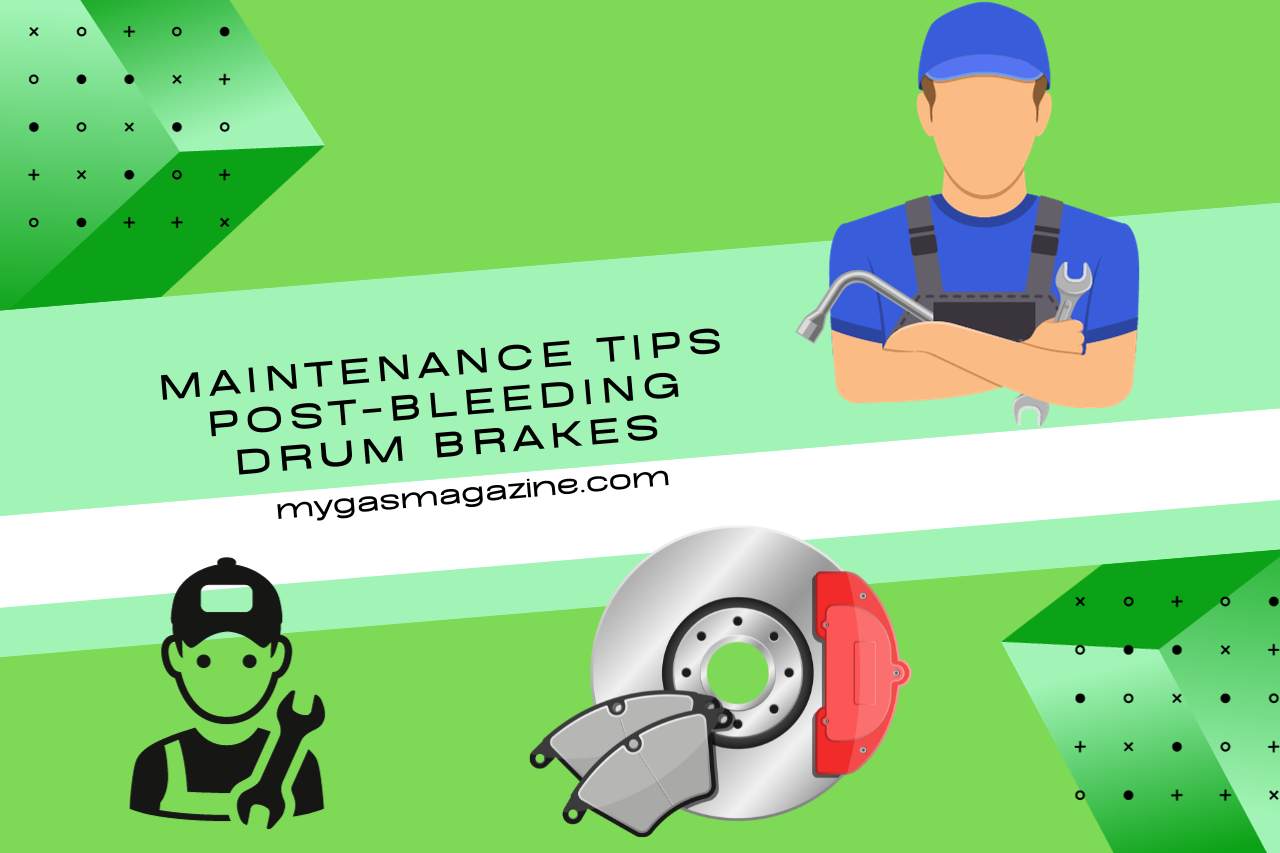

Maintenance Tips Post-Bleeding Drum Brakes
After you have successfully bled your drum brakes, proper post-maintenance is crucial to ensure your ongoing safety and efficiency. Here are few essential maintenance tips:
- Check Brake Fluid Levels: After bleeding, verify that your brake fluid level in your master cylinder reservoir is within your recommended range. Top off with any other appropriate type of brake fluid if necessary.
- Test Brake Pedal Firmness: Press your brake pedal to ensure it feels firm and not spongy. A spongy pedal could indicate that your air is still in your system, requiring you to further bleed.
- Inspect for Leaks: Look around for any bleeder valves, brake lines, and master cylinder for any signs of brake fluid leakage. Tighten connections or replace faulty components would be required if needed.
- Road Test the Vehicle: Conduct a safe, controlled road test to ensure all your brakes are functioning correctly. Listen for any unusual noises and pay attention to your braking response.
- Regular Fluid Checks and Replacement: Brake fluid should be checked regularly and replaced every 1-2 years to prevent any contamination and degradation, which can affect your braking performance.
- Routine Brake Inspections: Regularly inspect your entire brake system, including your pads, shoes, drums, and rotors, for wear and tear. Replace all your necessary parts as necessary.
- Keep Brake Components Clean: Periodically clean your brake components to remove dirt and debris, which can impact your braking efficiency.
Adhering to such maintenance tips post-bleeding ensures that your drum brakes remain in your optimal condition, providing you reliable and effective braking performance.
Watch this one,
Video Credits – 1A Auto: Repair Tips & Secrets Only Mechanics Know
You May Also Like
- How do I Reset Parking Brake Light? Demystifying Dashboard Lights
- How does a Caliper Parking Brake Work? Unveiling the Mechanics!
- How to Tell If Parking Brake is Stuck? Uncover the Mystery!
- Difference Between Park and Parking Brake – (Understanding Auto Lingo)
- When to Use Park Brake? Mastering the Art of Parking!
- Park Lights Come On When the Brake is Pressed – Understanding the Link!
- Brake Lamp Bulb Fault – Replacing a Faulty Brake Lamp Bulb!
- Park Brake Limited Function Service Required – Expert Tips for Maintenance!


Meet Lakith, the driving force behind MyGasMagazine.com. A seasoned mechanic with over 7 years of hands-on experience in our family-run Gas Mag Garage, Lakith combines his technical expertise with a deep passion for cars. His journey in the automotive world began alongside his father, learning the intricacies of car repair and maintenance. Today, as the founder of MyGasMagazine.com, Lakith shares his wealth of knowledge, offering readers a unique blend of practical advice, industry insights, and engaging stories from the vibrant car culture of Sri Lanka.



![Brake Booster Not Getting Enough Vacuum [Causes And Fixes]](https://mygasmagazine.com/wp-content/uploads/2024/04/Add-a-heading-9-768x524.jpg)
One Comment
Comments are closed.